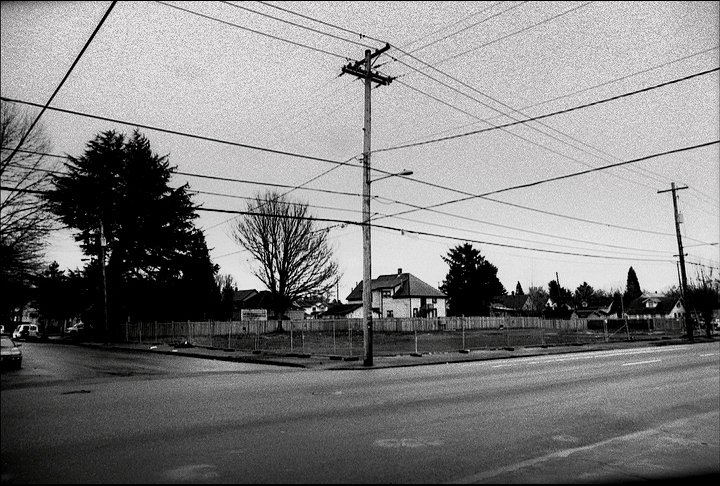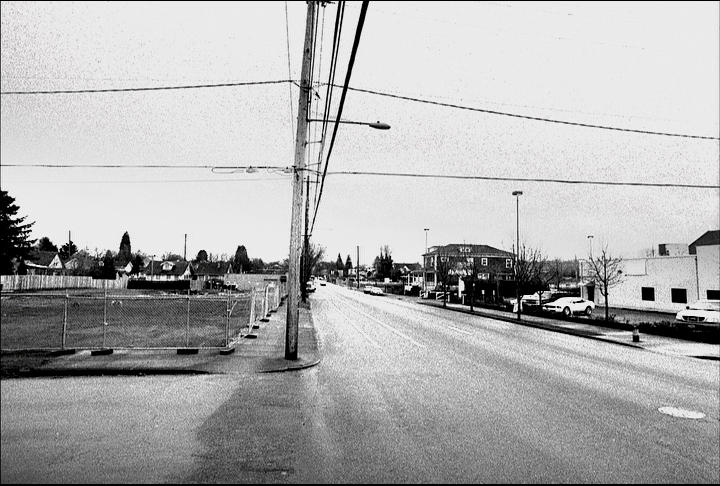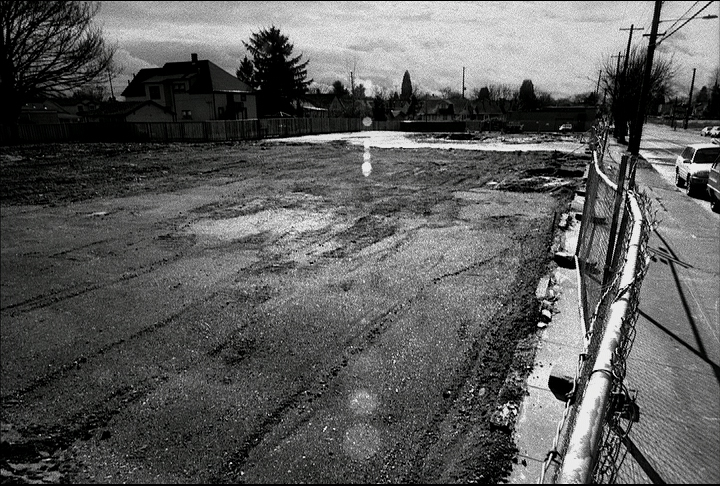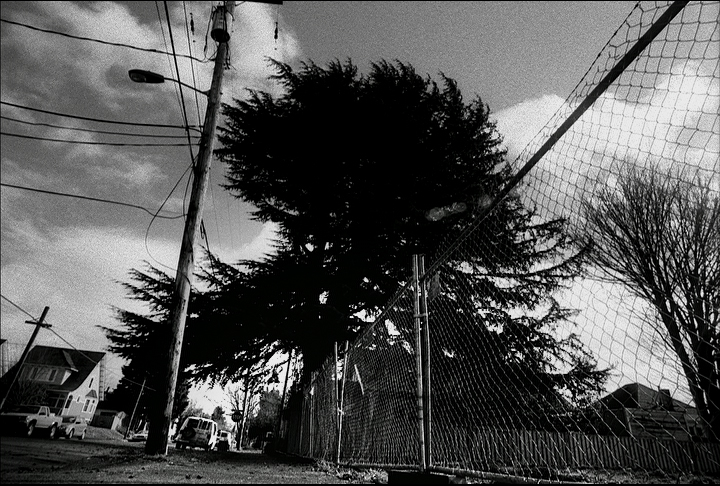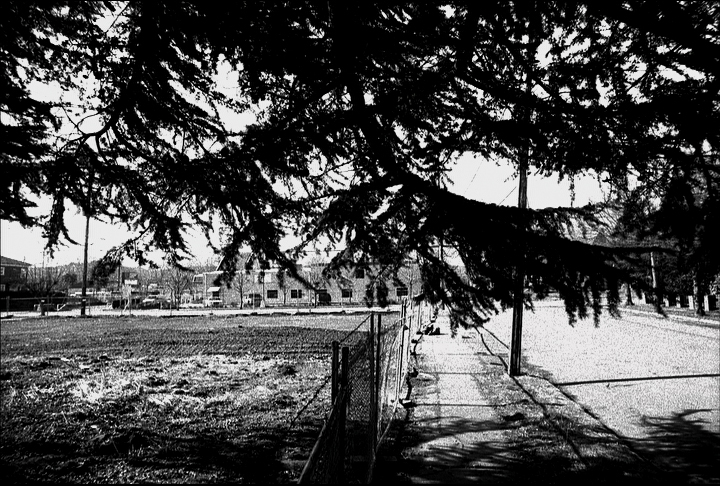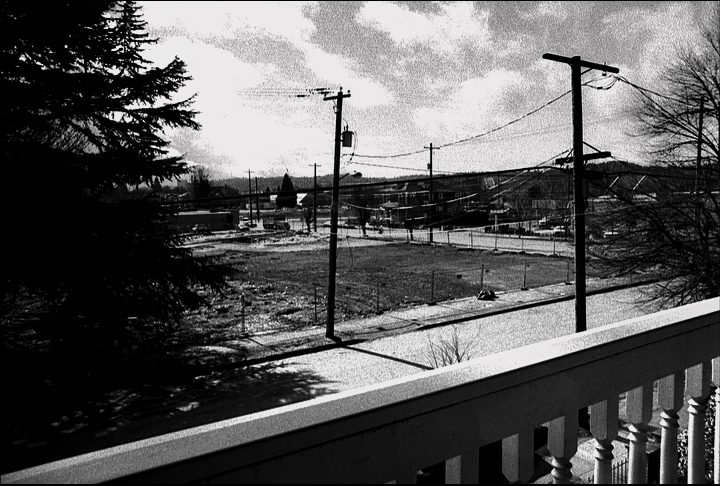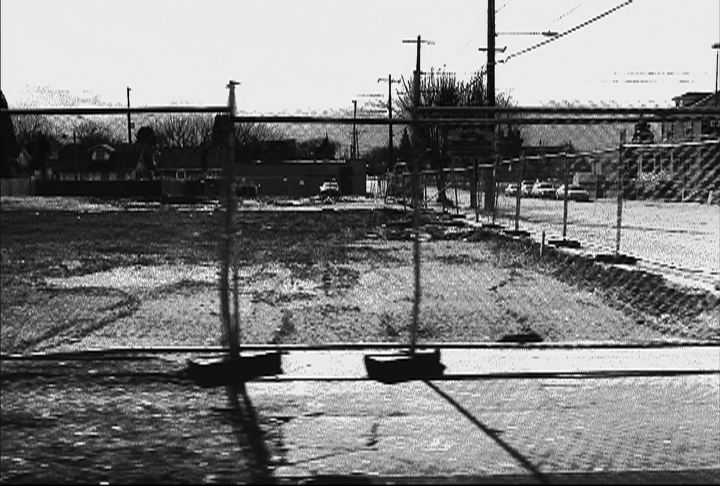Portrait #3: House of Sound
2009, 11 minutes 22 seconds, 35mm to HD
synopsis:
The Portrait Series is part of an ongoing series of filmed places, stories and histories of Cascadia with scores by musicians living in the Pacific Northwest.
In the 1950s, Williams Avenue had the most significant concentration of Blacks living in Portland. In the late ‘50s, pushing an ‘urban renewal’ policy and exercising the power of eminent domain, the Portland City Council condemned almost the entire neighborhood to replace it with the Memorial Coliseum, Rose Quarter and Emmanuel Hospital. Edited film and an edited 5-hour radio show dedicated to the memory of the House of Sound record store, this is a eulogy for the former community center and for all the places up and down the street that used to fill those empty lots, now unrecognizable as mixed-use, high-rise hyper-urban development.
credits:
score: Jef Brown
cinematography: Eric Edwards
edit:Rankin Renwick
online edit : Tim Scotten
film transfer: Jim Barrett- Downstream
made with support from Ruth Ann Brown and the Regional Arts & Culture Council
review:
House of Sound
by Jon Raymond
Like the song says: you don’t know what you’ve got ‘til it’s gone.
We know this is true, more or less. We feel it whenever we say goodbye to our friends and loved ones at the end of the night. We sense it in the aging buildings we walk past on the street. We see it in our own thinning pants. Everyday, this minor shock of sorrow is available, a dim background awareness of time’s passage, and a vague comprehension of the demonic, inverse ratio between a thing’s presence in our lives and its preciousness in our minds. As things fade from view, they assume a final shape, and sweeten in the honeycomb of memory.
Joni Mitchell made a hectoring folk song of the sentiment. She seems to think we could know what we’ve got before it’s gone, and the fact that we don’t is a matter of our own lousy morals. A harder truth to consider, though, is the one that suggests we literally cannot know; that we are physically barred from comprehending the value of what we adore until the moment it ceases to exist. It is only in the presence of death, absence, that the heart really opens.
Rankin Renwick, filmmaker, installation artist, mother, and activist, brings us to this hard truth with some regularity. In a series of artworks over the past decade she has bravely eulogized the passing of such unlikely public objects as traffic onramps, nuclear reactors, and civil rights protections in the Bush-Cheney era, allowing viewers the chance to note whatever lingering anger, resignation, bitterness, or euphoria these respective disappearances might imply. In “Clearcut,” for example, the artist documents the destruction of public murals largely taken for granted until their final moments of existence. In “Portrait #2: Trojan” she records (with the help of cameraman Eric Edwards) the implosion of a mothballed nuclear plant, an unloved monument that is now, nonetheless, perversely missed.
The most recent object of Renwick’s attention is the dearly departed building on the corner of Beech and Williams that once housed the House of Sound, a record store, community anchor, and landmark for passersby. Founded in1964, the store was itself the remnant of a nearly mythic neighborhood in the city’s history, a strip of black jazz clubs that evaporated with the development of Memorial Coliseum and Emanuel Hospital in the area. In retrospect, the lost neighborhood has come to seem like a flashing sliver of Harlem itself, a beacon of livelier, more colorful times in a part of town only recently rediscovered by developers.
Renwick’s response to the loss of the House of Sound is characteristically stalwart and unintrusive. Like a kind of hospice nurse of community architecture, she has quietly tended the patient, dressing its wounds, cleaning its body, making room for relatives to view the remains. She has collected family histories and arranged the services. Here, now, the sign rests, surrounded by votive candles, as ghostly images and voices, remembering, float in the air.
What is there to say, though? The House of Sound is gone. It’s a fact we have to deal with, as we deal with any number of unhappy changes in life. The loss is not exactly tragic-"another wrecked building in the constant wreckage of the city’s upward progress-"but to let it go unrecognized would have been. Thanks to Renwick, we are at least allowed a moment to mark the passage. Thanks to Renwick, the preservationist, we are granted the dignity of mourning.



